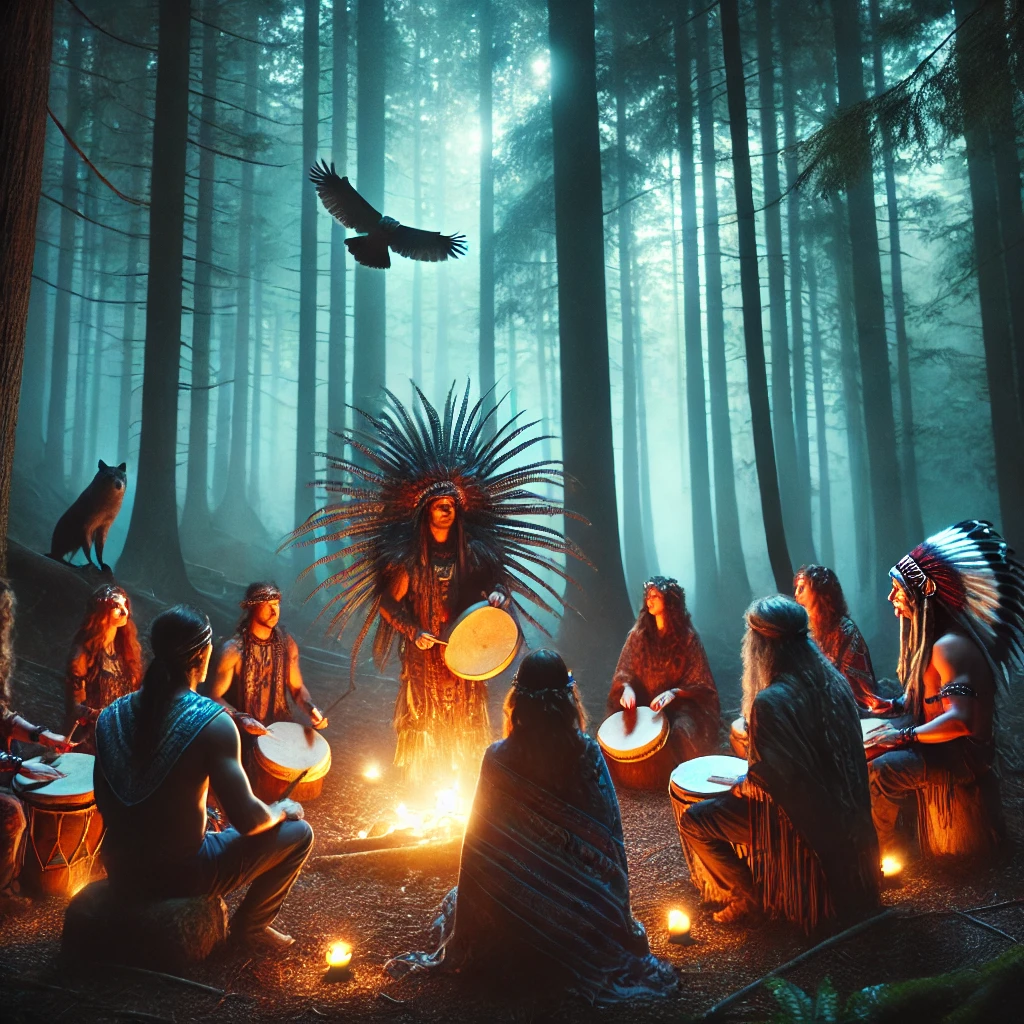Shamanic divination is a sacred practice that enables individuals to engage in meaningful dialogue with compassionate helping spirits. Rooted in Indigenous traditions and revived through the work of Michael Harner and others, divination is not fortune-telling but a collaborative, spirit-led inquiry rooted in humility, reciprocity, and ethical intention. This article explores the philosophical foundation and functional process of shamanic divination, emphasizing relationship-building with non-ordinary allies and the importance of experiential authority in spiritual practice. Drawing from the frameworks of core shamanism and cross-cultural anthropological research, we examine how divination serves personal healing and global restoration.
Foundations of Shamanic Divination
The word “divination” is derived from the Latin divinare, meaning “to foresee, to be inspired by God.” Within the framework of core shamanism, divination refers to the process of journeying to compassionate spirits for insight into a specific question. Harner (2013) emphasized that these practices are not religious doctrines but cross-cultural methodologies based on altered states of consciousness. Effective divination is built upon strong, cultivated relationships with helping spirits—beings that reside in the upper and lower worlds and are accessible through non-ordinary states of perception.
In contrast to the middle world—which corresponds to ordinary reality and may contain spirits with agendas—helpers in the upper and lower worlds are considered wise, benevolent, and trustworthy (Harner, 2013). These spirits are not concerned with our ancestry or background; instead, they welcome collaboration with those who approach with sincerity and clear intention. Over time, through repeated journeys and heart-centered living, these partnerships deepen, forming the basis for effective spiritual guidance.
The Process of Shamanic Divination
Shamanic divination typically begins by entering a sacred space. The practitioner may call in trusted spiritual allies using a drum, rattle, or a unique soul song—a vibrational expression that reflects their inner essence and serves as a beacon to the spirit world. This soul song is not a performance but a declaration of presence, anchoring the practitioner’s energy in authenticity and openness.
Questions posed to the spirits should be clear and open-ended. Practitioners are advised to avoid predictive or “when” questions, as the future is fluid and ever-changing. Instead, inquiries should focus on “who,” “what,” “where,” “why,” and “how.” These questions allow the helping spirits to respond symbolically, metaphorically, or even telepathically—sometimes through vision, other times through sensation or movement. If the spirit’s response is unclear, the practitioner can respectfully request clarification in another form.
Divination can also be engaged through embodied practices such as the animal dance, in which a helping spirit is called in and danced with using a rattle or drum. This allows the spirit to experience physicality, while the practitioner becomes attuned to the compassion and rhythm of the ally. Over time, such exchanges transform the practitioner into a more receptive and grounded channel. Winkelman (2010), whose biopsychosocial model of shamanism bridges neuroscience and anthropology, found that rhythmic movement and trance states activate integrative functions of the brain that enhance empathy and insight.
Examples of Divinatory Techniques
Practitioners often use natural objects, such as stones, to receive guidance. In one technique, a rock is held in one hand while the other hand holds a rattle. With a specific question in mind, the practitioner rattles while allowing the stone to “speak” in a symbolic or energetic way. By relaxing the thinking mind, answers are received through subtle impressions—such as warmth in the stomach as a call to trust one’s instincts, or a visual metaphor indicating a necessary change.
Access to helping spirits is made possible through established entry points in nature. These may include the crack of a tree, a bubbling spring, a cave, a rainbow, or campfire smoke. These points of departure must feel familiar and safe, allowing the practitioner to descend into the lower world or ascend into the upper world. For upward journeys, pushing through a thin cloud or using the smoke as a lift-off mechanism are common metaphors used by the psyche to cross the boundary into the celestial realm.
In line with ethical guidelines established by Harner and contemporary shamanic teachers, divination should never be performed without the consent of the person being read for (Harner, 2013). Spirits are not used to manipulate outcomes or gain power over others. They are partners, not puppets, and the practitioner must approach them with respect, consent, and compassion.
Living the Wisdom Received
Shamanic divination is not a one-way channel; it demands accountability from the practitioner. As one begins to receive healing and insight, a call naturally arises to live a more meaningful and heart-centered life. In this way, divination becomes more than a technique—it becomes a way of being. The more healed the practitioner becomes, the fewer internal blockages exist, allowing clearer and more compassionate guidance to come through. Harner (2013) refers to this as becoming “a better hollow bone”—a clearer channel for spirit.
This emphasis on transformation through relationship is echoed in anthropological studies. Winkelman (2013) found that spiritual states accessed through divinatory ritual promote a reconnection to innate human capacities for compassion, visionary imagination, and interconnectedness. These capacities are essential for both personal healing and addressing global crises.
Conclusion
Shamanic divination is a sacred conversation with the unseen—one that honors the autonomy of spirit, the wisdom of nature, and the healing potential within each of us. Unlike predictive systems that promise certainty, this work invites humility and presence. It reminds us that we do not walk alone, and that guidance is always available when we learn to ask with sincerity and listen with reverence. Whether journeying with a stone, dancing with a power animal, or traveling through campfire smoke, the practitioner learns that divination is less about answers and more about relationship, trust, and transformation.
As we engage this practice with integrity, we become part of a lineage of humans who have circled around the boundaries of the earth, listening deeply to the wisdom of the beyond.
Mike Bribeaux, LMFT, PhD Candidate in Integral Health, Founder, Warrior Child Healing
References
Harner, M. (2013). Cave and cosmos: Shamanic encounters with another reality. North Atlantic Books.
Winkelman, M. (2010). Shamanism: A biopsychosocial paradigm of consciousness and healing. Praeger.
Winkelman, M. (2013). Therapeutic applications of altered states of consciousness and shamanism. Anthropology of Consciousness, 24(1), 120–130. https://doi.org/10.1111/anoc.12006




